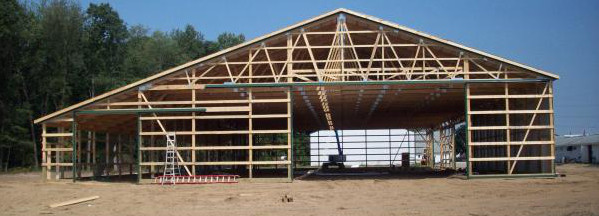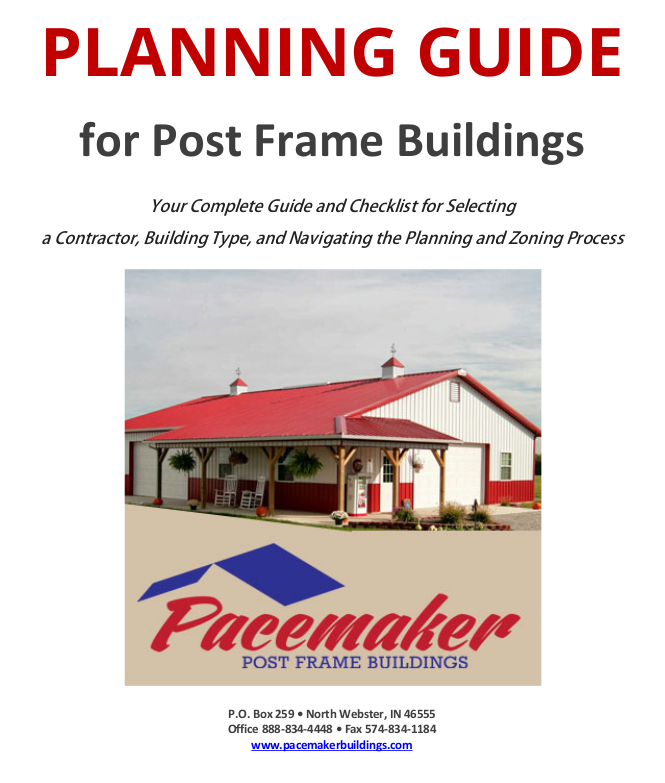Energy efficiency is an important consideration for businesses and residential property owners, and this is also the case when looking at building post frame buildings (at times called pole buildings).
Put simply, it’s always a good idea to reduce your carbon footprint – it helps the environment, and it saves you money!
When looking at building a business, farm, or pole building for your personal property there are several options available to you for erecting a building. The post frame building continues to grow in popularity and use, largely because it has advantages over the others when it comes to immediate energy efficiency and the impact on the environment over the lifetime of the building.
Energy Efficiency of Different Construction Options
Using the pole (post frame building) technique to build a sturdy structure has advantages of speed and cost – you can have one erected in a fraction of the time required for other more labor-intensive construction jobs that use materials like concrete and steel frames. Additionally, a comparison of the energy-use is telling when compared to other building types. For example:
CONCRETE BUILDINGS
Concrete might be sturdy, but it is a material with poor inherent energy-efficiency when it comes to insulation.
The additions needed to reinforce the core of concrete blocks drives up the overall price. The extra material needed, such as furring strips, insulation with an adequate R-value, stud walls and external covering for mandatory fire safety make concrete an expensive and time consuming alternative.
STEEL FRAME BUILDINGS
Another option is the steel frame. Steel conducts well naturally, making it a poor option for insulation despite its strength as a material for construction.
This type of building requires insulation to be sandwiched between the outside steel and the framing. This causes the insulation to get crimped in “waves” around the building. Compressed insulation has very little R-value. In addition, the steel columns act as power bridges, transferring heat to the outside during the winter. In fact, steel conducts heat 310x faster than wood.
POST FRAME BUILDINGS
Lastly, the post frame building has a natural composition that allows for insulation, without cramping anything.
Because of the wood used in many of the parts – headers, trusses, etc. – there is natural insulation built into the material. As you well know, wood does not conduct well – so it will keep the cold out in winter and keep the heat out in summer.
Post Frame Insulation Advantages
You don’t give up anything to get this added energy efficiency!
The strength of a post frame building is often greater than the alternatives. The poles are embedded deep into the ground thereby avoiding any shear point above grade that is further supported by trusses making the whole diaphragm structure designed to withstand even the strongest gusts of wind.
Additionally, wood framing transfers less heat than steel framing and masonry block walls. Many “Cool Metal Roofing” formulations add energy savings and have earned Energy Star Ratings.
This Energy Package system teams superior insulation with effective ventilation for a comfortable and cost-efficient environment.
This means lower energy cost and a better return on your investment, saving you money year after year!
With these attributes and the in-built energy efficiency, post frame buildings are cost-effective, sturdy and labor-friendly – which means you save money without compromising.
Questions on post-frame construction? Contact us today!


